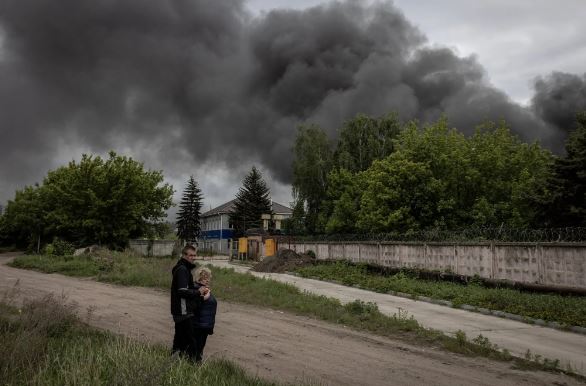In a significant policy shift, President Biden has authorized Ukraine to conduct limited strikes inside Russia using American-made weapons, marking a new chapter in the Ukraine conflict, U.S. officials announced on Thursday. This decision allows Ukraine to launch counterattacks on artillery, missile bases, and command centers inside Russia, aimed at defending Kharkiv and surrounding areas from cross-border attacks.
This authorization marks the first time an American president has permitted limited military actions within the borders of a nuclear-armed adversary. Despite this change, the White House emphasized that the strikes are restricted to acts of self-defense, specifically targeting Russian forces attacking or preparing to attack from positions just inside the Russian border.
Reported by Politico earlier on Thursday, the policy shift is already in effect. While the White House framed this decision narrowly, the implications are significant. Previously, President Biden had resisted allowing American-made weapons to be used outside Ukrainian borders to avoid escalating the conflict with Russia, a stance intended to prevent a wider war.
Having reversed his position, Biden has crossed a self-imposed red line. Administration officials acknowledged that further Russian attacks from inside its territory could lead to additional policy adjustments. “This is a new reality,” said a senior official, “and perhaps a new era” in the conflict.
The reaction from Russia remains to be seen, but Moscow has previously warned of consequences if the U.S. altered its stance. Last week, Russia conducted nuclear deployment drills, possibly signaling to Washington its readiness to escalate if provoked.
Russia’s repeated nuclear threats since its invasion of Ukraine, particularly during moments of military setbacks, have kept Western policymakers cautious. However, Biden’s decision now raises the question of Russia’s response to American weapons being used inside its borders. President Putin’s threshold for retaliation remains uncertain.
Within the White House, the deliberations leading to this decision were tightly held. Secretary of State Antony J. Blinken’s recent visit to Kyiv played a crucial role. He reported back that the ban on striking Russian territory was endangering Ukrainian positions, particularly around Kharkiv, where Russian forces were exploiting the restriction.
Ukraine was suffering from an “artificial line” that limited their ability to respond to Russian attacks. They recommended to President Biden that the ban be lifted for defensive strikes near Kharkiv.
Several U.S. allies had already relaxed their restrictions. Britain, France, and Germany had permitted the use of their supplied weapons for strikes inside Russia, with NATO Secretary General Jens Stoltenberg also supporting this stance. While it appeared that these allies were influencing Biden, U.S. officials insisted that the decision was made independently.
The urgency of the situation was highlighted by a major Russian assault on Kharkiv starting around May 10. Following consultations with Ukrainian counterparts, U.S. officials decided to recommend the policy change. President Biden, after reviewing the situation with his national security team, agreed to the limited authorization.
This decision was finalized after a meeting of national security principals. Although the change was kept confidential, it was implemented earlier this week. Secretary Blinken hinted at a potential policy adaptation during a visit to Moldova but did not disclose the finalized decision.
The internal debate leading to Biden’s decision remains undisclosed. It is unclear whether Biden now perceives a reduced risk of escalation or if the potential loss of Ukrainian territory influenced his reversal.
Despite the policy change, communication lapses persisted. A Pentagon spokeswoman, Sabrina Singh, unaware of the update, defended the old policy during a Thursday briefing. However, U.S. officials confirm that orders have been issued to allow Ukraine to begin counterattacks with American weapons imminently.

